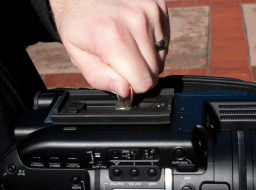This article lists off the problems that can cause damage to your
equipment when filming. One of them being that you need
to have your tripod stable, if the legs are close together
then the tripod may fall, so make sure they are as far
apart as possible. Another issue is strong or loose legs
on the tripod which can also cause it to be unstable. Then
it talks about different tripods, you may want to get a cheap
one, but in the end, you may want to get a more expensive one.
Moving on to the mounting part of the camera, if not screwed
on properly it will make the camera not go on the tripod
right. You should also make sure to tighten your lock
on the tripod because if you walk away and it’s not secure,
the camera could fall forward onto the ground. Don’t forget
the space you film, there could be objects in the way,
or areas you shouldn’t put the tripod because it could be
a danger to others. Traffic can make you late, and or jiggle
around your equipment. If you’re not careful. you can
hurt the cables by having pressure on them, so you should
tape them in place. Lastly, make sure you have enough area
to set up your camera, and then protect your equipment by
having someone watching it at all times. What I learned
in this article was the many ways you could have something
go wrong with video equipment. This can help me by making
sure I follow these steps.
The article link is here: http://www.videomaker.com/article/17146-10-problems-that-might-break-your-gear-when-shooting-an-event-and-how-to-avoid-them


